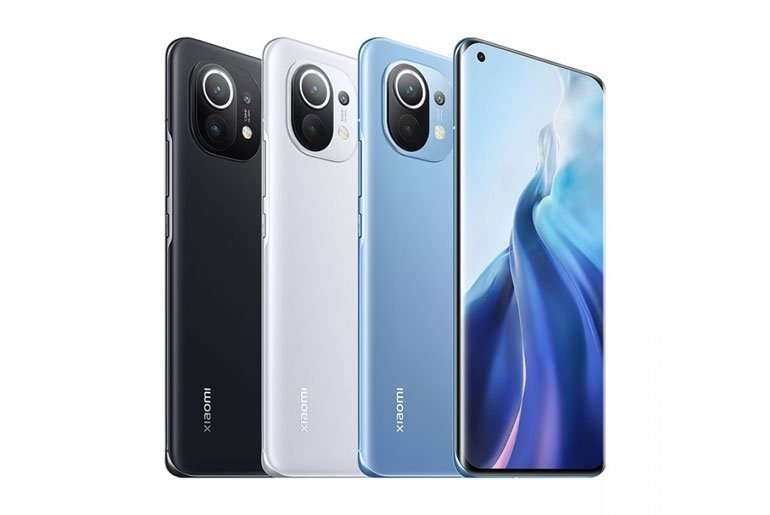Vivo V20 SE Review - Android
The Vivo V20 SE is the cheapest variant in the company’s latest midrange phone line. It shares a couple of key attributes that the Vivo V20 and V20 Pro have, but with a toned-down set of features to keep the price down. It was even discounted a few weeks ago to make it more affordable. […]
This article, Vivo V20 SE Review, was originally published at NoypiGeeks | Philippines Technology News, Reviews and How to's.
The Vivo V20 SE is the cheapest variant in the company’s latest midrange phone line.
It shares a couple of key attributes that the Vivo V20 and V20 Pro have, but with a toned-down set of features to keep the price down. It was even discounted a few weeks ago to make it more affordable. But the question is, is it worth your time and money? We find out in our Vivo V20 SE review.
Vivo V20 SE Specs
- Android 10, Funtouch OS 11
- Dual SIM, Dual standby
- 6.44-inch FHD+ AMOLED display, 2400 x 1080 pixel resolution, ~408ppi
- 2.0GHz Qualcomm Snapdragon 665 octa-core processor
- Adreno 610 GPU
- 8GB RAM
- 128GB internal storage, expandable via microSD
- 32-megapixel, f/2.0 front camera
- 48-megapixel (f/1.8) + 8-megapixel (ultra-wide/macro) + 2-megapixel (depth sensor) rear cameras
- In-display fingerprint scanner, Face unlock
- 4G LTE
- WiFi 802.11 a/b/g/n/ac, dual-band
- Bluetooth 5.0
- FM Radio
- GPS, BDS, GALILEO, GLONASS
- USB Type-C
- Dimensions: 161.00 x 74.08 x 7.83mm
- Weight: 171g
- Colors: Gravity Black, Oxygen Blue
- 4,100mAh non-removable battery, 33W fast charging
Design and Build Quality
Instead of copying the V20 and V20 Pro design, the Vivo V20 SE looks a lot like the Vivo X50. It has a vertical glass that houses all three cameras, with a clean paint job reflecting to light. The one we have here is the Oxygen Blue color, while a Gravity Black option is also available.

But what we really liked about this device is how thin and light it is. Like other Vivo smartphones, this thing feels really nice and comfortable to hold — which is surprisingly rare on smartphones today. It’s only 7.83mm thick and weighs 171g, while most phones average at around 8.5mm and 180g, respectively.
The back panel has a matte glass finish, making it less prone to fingerprint marks. Holding it together is a solid metal chassis.

To keep the back panel clean, the Vivo V20 SE has an in-display fingerprint scanner instead of a rear-mounted one.
But for some reason, Vivo went back to notches instead of moving forward with punch-holes for the V20 series. On the upside, the teardrop notch is tiny, so it’s less distracting.

Taking a tour, we have the SIM tray on the left that can house two nano-SIM cards and a microSD card. While on the other side there are the volume controls and lock/power button. The physical keys feel solid and tactile enough.
At the bottom, there’s the USB Type-C, single loudspeaker, headphone jack, and the primary microphone.

It may not have the most imaginative design, but the Vivo V20 SE’s lightweight and compact build makes it really nice to carry around.
Display and Sound Quality
The Vivo V20 SE boasts a 6.44-inch FHD AMOLED display, with a 2400 x 1080 pixel resolution. Just like most AMOLED screens, we love its deep contrast and vibrant colors. Although, the lack of a 90Hz or 120Hz high refresh rate is a huge bummer.

As for audio, the bottom loudspeaker outputs decent volume and clarity, but we were expecting it to be louder. Having a stereo speaker setup would be nice, too.
On the upside, it does come with a 3.5mm headphone jack and a pair of earphones in the box, which we rarely see on smartphones today.
Hardware and Performance
Powering the Vivo V20 SE is a 2.0GHz Qualcomm Snapdragon 665 octa-core processor with 128GB of expandable storage. We doubt it can fully utilize the included 8GB of RAM, but it’s there.
 Call of Duty Mobile, League of Legends Wild Rift on Vivo V20 SE
Call of Duty Mobile, League of Legends Wild Rift on Vivo V20 SEMultitasking, basic tasks, and gaming were fine on this device. Games like Call of Duty Mobile and League of Legends Wild Rift ran at medium to high settings. Albeit, we wish Vivo went with a more powerful chipset.
Vivo V20 SE Benchmark scores

Software and User Interface
Much like most 2020 Vivo phones, the Vivo V20 SE runs on Android 11-based Funtouch OS 11. Since it’s a new device, it may receive the latest OriginOS update from Vivo, which will replace Funtouch. But as of writing, it’s yet to be added to the OS’ official update schedule.
Bottom line, the interface is a big improvement over the previous versions. It’s now much cleaner and straightforward. When compared to other interfaces in the market, it still feels a little bloated. You can check the screenshots below.
 Lock Screen | Home Screen
Lock Screen | Home Screen Biometrics and Security
Biometrics and Security Drop-down Menu | Jovi Home
Drop-down Menu | Jovi Home Ultra Game Mode | Vivo App Store
Ultra Game Mode | Vivo App Store Customization Settings
Customization Settings Camera App | Keyboard
Camera App | KeyboardCamera Quality
It may be the cheapest model, but the Vivo V20 SE has an equally interesting set of cameras than its bigger brothers. All the cameras are pretty straightforward and actually usable, no extra nonsense.

This one features a 48-megapixel main shooter, an 8-megapixel ultra-wide that can be used for macro shots, and a 2-megapixel depth sensor. We also have a sharp 32-megapixel selfie camera on the front.
The rear cameras take images with great detail and slightly saturated colors in good lighting scenarios. The highlights can get overexposed at times, so make sure you know how to use that exposure slider before taking a shot.
 48-megapixel main camera
48-megapixel main camera 48-megapixel main camera
48-megapixel main cameraAller Plasma Nano+ portable air purifier and surface sanitizer
28/12/2020 12:55 PM
Realme Link for iOS now available
28/12/2020 09:50 AM
TCL L10 Plus and L7 budget phones now in the Philippines
28/12/2020 12:48 PM
Synology NAS - Online learning safeguard during pandemic
28/12/2020 01:47 PM
Lalamove now accepts GCash top-ups
28/12/2020 05:22 AM
Xiaomi Mi 11 is now official with Snapdragon 888, 108MP camera
28/12/2020 04:58 PM
SophosAI announces new open artificial intelligence developments
28/12/2020 07:37 AM
- HEALTH
- Comics
- Libraries & Demo
- Sports Games
- Racing
- Photography
- Transportation
- Media & Video
- Sports
- Health & Fitness
- Weather
- Medical
- Cards & Casino
- Arcade & Action
- Personalization
- Social
- Communication
- Productivity
- Casual
- Shopping
- Tools
- Brain & Puzzle
- Business
- News & Magazines
- Finance
- Lifestyle
- Music & Audio
- Entertainment
- Travel & Local
- Books & Reference
- Education
2014 © Filipino apps and news








